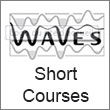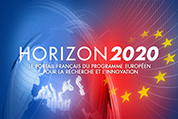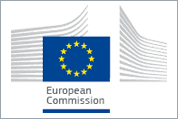Short-course by TU Delft - Advanced geophysical imaging in complex media

Short-Course on “Advanced geophysical imaging in complex media”
06-16 September 2016
Delft University of Technology
This 1st Short-course is part of the WP4 Training, and organized by TU Delft. It was held in Delft in September 2016 (6-16), just after the 2nd WAVES Workshop. This is a two-weeks block course, which has been openned for all WAVES students and non-WAVES graduate students who express interest: 35 participants in total, of which 15 WAVES fellows.
Objectives of the short-course:
Subjects that will be handled include:
• Unified treatment of acoustic, elastodynamic and electromagnetic wave theory
• Unified reciprocity and representation theorems
• Applications in multiple elimination, wavefield decomposition, time-reversed acoustics, seismic interferometry, Marchenko imaging, and much more...
Agenda:
The short-course on "Advanced geophysical imaging in complex media" has been given by Kees Wapenaar and Jacob Fokkema, professors of Applied Geophysics, in room 02.110 at the Faculty of Civil Engineering and Geosciences, Stevinweg 1, 2628 CN in Delft. Lectures started at 10:30h daily.
Tuesday, September 6, 2016:
Wapenaar: Discussion of homogeneous Green's function as the basis for time-reversal acoustics, seismic interferometry and holographic imaging. Unified two-way wave equation.
Wednesday, September 7, 2016:
Fokkema: Acoustic reciprocity and representations.
Thursday, September 8, 2016:
Fokkema: 4D monitoring. Causality. Kramers-Kronig relations.
Wapenaar: Symmetry of two-way wave equation. Decomposition. One-way wave equations.
Friday, September 9, 2016:
Wapenaar: Unified two-way and one-way reciprocity theorems. Seismic interferometry.
Monday, September 12, 2016:
Wapenaar: Theory of Marchenko imaging.
Tuesday, September 13, 2016:
Fokkema: Marine acquisition.
Van der Neut (guest speaker): Practical aspects of Marchenko imaging.
Presentations:
Wednesday, September 14, 2016:
Michael Reinwald & Johannes Aichele. Topic: "Applications of time-reversal across disciplines". Papers: Catheline et al., 2013, Tomography from diffuse waves: Passive shear wave imaging using low frame rate scanners, Applied Physics Letters, 103, 014101. Chabchoub and Fink, 2014, Time-Reversal Generation of Rogue Waves, arXiv:1311.2990v2.
Christian Reinicke & Rueben Zotz-Wilson. Paper: Grobbe et al., 2016, Unified multi-depth-level field decomposition, Geophysical Prospecting, 64, 361-391.
Florian Lyonnet & Sixue Wu. Topic: "Reciprocity applied in ultrasonic non destructive techniques". Papers: Achenbach, 2013, A new use of the elastodynamic reciprocity theorem, Mathematics of Mechanics and Solids, 1-14. Hirose and Yamano, 1996, Scattering analysis and simulation for Lamb wave ultrasonic testing, Review of Progress in Quantitative Nondestructive Evaluation, 15, 201-207. Zhang and Achenbach, 1999, Simulation of self-focusing by an array on a crack in an immersed specimen, Ultrasonics, 37, 9-18.
Theodor Becker & Bence Solymosi. Paper: Bazargani and Snieder, 2014, Optimal wave focusing in acoustic media, CWP-791.
Aïda Hejazi & Emanuel Kaestle. Paper: Larose et al., 2008, Fluctuations of correlations and Green’s function reconstruction: Role of scattering, Journal of Applied Physics, 103, 114907.
Patrick Elison & Daniel Wehner. Paper: Berkhout and Verschuur, 1997, Estimation of multiple scattering by iterative inversion, Parts I and II, Geophysics, 62, 1586-1611.
Thursday, September 15, 2016:
Marta Pieńkowska & Gil Averbuch. Paper: Wapenaar et al., 2006, Nonreciprocal Green’s function retrieval by cross correlation, Journal of the Acoustical Society of America, 120, EL7.
Ranjani Shamasundar & Matteo Caporal. Paper: Alassi et al., 2010, Relating 4D seismics to reservoir geomechanical changes using a discrete element approach, Geophysical Prospecting, 58, 657-668.
Lele Zhang & Tianci Cui. Paper: Wapenaar et al., 2001, Reciprocity theorems for electromagnetic or acoustic one-way wave fields in dissipative inhomogeneous media, Radio Science, 36, 851-863.
Hussain Hammad & Jan Willem Vrolijk. Topic: Scattering order decomposition.
Friday, September 16, 2016:
Nele Boersing & Alyssa Crippen. Paper: Grêt et al., 2006, Time-lapse monitoring of rock properties with coda wave interferometry, Journal of Geophysical Research, 111, B03305.
Aayush Garg & Gabriel Lopez. Paper: Curtis and Halliday, 2010, Source-receiver wave field interferometry, Phys. Rev. E, 81, 046601.
Aparajita Nath & Shan Qu. Paper: Wapenaar et al., 2012, Creating a virtual source inside a medium from reflection data: heuristic derivation and stationary-phase analysis, Geophysical Journal International, 190, 1020-1024.
Eva Dokter & Ivan Karpov.Paper:Curtis et al., 2009, Virtual seismometers in the subsurface of the Earth from seismic interferometry, Nature Geoscience, 2(10), 700–704.
Myrna Staring & Karlien Sambell. Paper: Ikelle, 2006, A construct of internal multiples from surface data only: the concept of virtual seismic events, Geophysical Journal International, 164, 383-393
Joeri Brackenhoff. Paper: Wapenaar et al., 2016, Unified double- and single-sided homogeneous Green’s function representations, Proceedings of the Royal Society A, 472, 20160162
Short-course details:
Course material can be downloaded from:
- Introduction
- 4D
- Focusing1D
- GHomogeneous
- GP_16c
- GP_16d
- Interferometry
- Jasa_14
- Marchenko
- Marchenko
- Marine
- Papers
- Presentations
- Reciprocity
- sheets1
- sheets2
- sheets3
- sheets4
Benefits to the WAVES fellows:
The fellows learn in a systematic way how to use unified reciprocity theorems to derive seismic methods, such as imaging, multiple elimination, interferometry, time-reversal, etc.
"I learnt fundamental theories about interferometry, time-reversal and Marchenko stuff, which deeps the understanding of my PhD project. From the student presentations, I saw the theory applications not only in oil and gas exploration, but also in medical imaging, non-deconstructive detection and so on. They all look every interesting, so my future career choice will not be limited to oil and gas only. During the course, I had such a good time with our fellow WAVES Ph.D. students and also built the network with the local TU Delft students, which will stimulate our discussions and collaborations in the near future. Last but not least, I am deeply moved by Kees: his attitude, knowledge and personality will have a lifetime impact on me about how to be a good scientist." Tianci Cui, SCR
"The short course in Delft was a wonderful experience for me. The time table was very carefully organized. The lectures by Kees Wapenaar were coherent. He is a great teacher. He had thought about all before. The material he covered was very useful for me. He clarified everything using a chalk and the blackboard and writing all down. The concepts that I was already familiar with were reshaped by his way of teaching. I am sure that his lectures will be always in the background of all that I am doing and I will do in my future. He had also prepared lecture notes which made it easier to follow him. The presentations of the last three days were also useful. We learned to work in groups of two people to dig a paper and make it understandable for others." Aida Hejazi, UPMC
Also in the section
Key Facts
- Coordinated by Université Pierre et Marie Curie
- 15 participating partners
- 6 European countries and the USA
- 15 trained fellows
- Project budget: 3 227 952.96€
- Project duration: 4 years
- WAVES is a European project funded by the European Union’s Horizon 2020 research and innovation programme under the Marie Slodowska-Curie grant agreement n° 641943.
Contact
Coordinator:
Lapo Boschi (lapo.boschi @ upmc.fr)
Project Manager
Fanny Schultz (fanny.schultz @ sorbonne-universite.fr)



